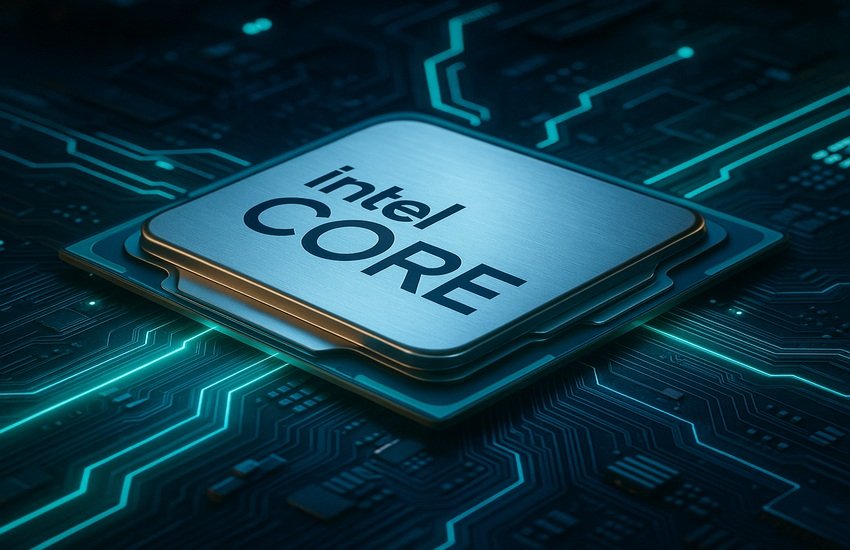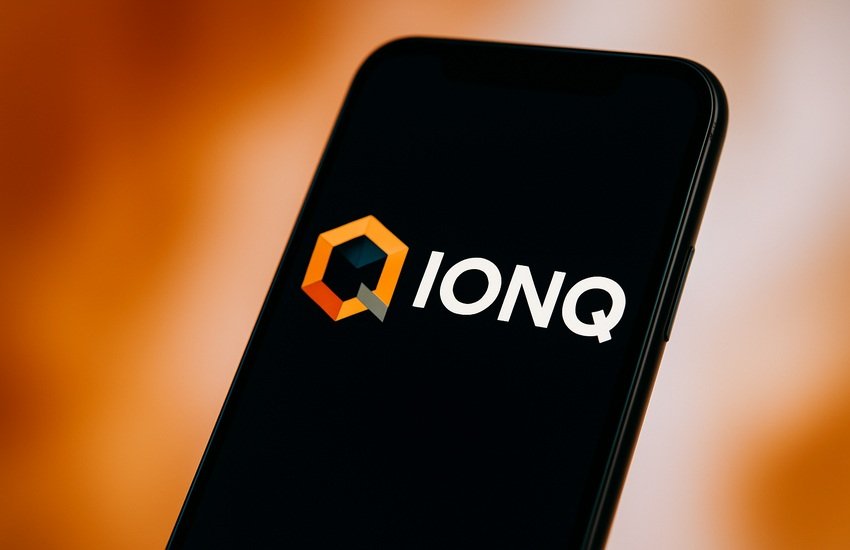Continue Reading With Our 7-Day Free Trial
Intel shares surged 24% to $30.76 after Nvidia announced a $5 billion equity investment and a historic partnership to co-develop multiple generations of custom x86 CPUs for data centers and personal computing. The deal, unveiled on September 18, 2025, marks one of the largest same-day jumps in Intel’s history, putting the company on track for its biggest single-session gain in nearly five decades. Under the agreement, Intel will design CPUs tightly integrated into Nvidia’s AI supercomputing platforms, while Nvidia GPU chiplets will be embedded into Intel x86 SoCs for PCs. This positions Intel to play a critical role in the next wave of accelerated and AI-driven computing. The announcement comes just weeks after the U.S. government took a 10% stake in Intel, highlighting Washington’s strategic interest in the company. Despite Intel’s weak foundry momentum, this collaboration opens new pathways for growth, but questions remain over long-term execution, profitability, and competitive dynamics.
Big Money, Big Signal: Intel Secures $5B Backing From Nvidia
Intel’s $5 billion investment from Nvidia, priced at $23.28 per share, is not merely a capital infusion but a strategic endorsement of Intel’s pivotal role in shaping the future of AI and data-center computing. For Intel, which has faced years of stagnation in its foundry business and declining competitiveness in CPUs against AMD and ARM-based challengers, the investment provides not only financial reinforcement but also validation from the world’s most valuable semiconductor company. Nvidia’s equity stake underscores its willingness to link its own growth trajectory with Intel’s, reflecting a bet that Intel’s x86 CPUs remain indispensable for the enterprise, cloud, and PC ecosystems. Importantly, the transaction follows the Trump administration’s recent $8.9 billion investment in Intel, making the U.S. government its largest shareholder. Together, these moves demonstrate that both private capital and public policy see Intel as a strategically vital player in computing infrastructure. The immediate stock surge of 24% reflects market recognition of the dual boost in credibility and liquidity. Yet, investor optimism must be tempered by Intel’s fundamentals: free cash flow remains negative, margins are under pressure, and the company’s foundry division continues to lag behind Taiwan Semiconductor Manufacturing (TSMC). Nvidia CEO Jensen Huang was careful to clarify that Nvidia’s primary foundry relationship remains with TSMC, and that the Intel partnership is squarely focused on CPUs and system-level collaboration. That distinction signals that while Nvidia is financially aligned with Intel, it does not view Intel Foundry Services as a near-term manufacturing solution. For Intel shareholders, this duality raises an important question: is Nvidia’s investment more symbolic than operational? Regardless, the financial vote of confidence is a significant milestone for Intel at a time when external validation was badly needed.
Strategic Partnership To Shape Next-Generation Computing
At the heart of the deal is a sweeping product collaboration that positions Intel as an enabler of Nvidia’s accelerated computing roadmap. The companies announced plans to co-develop custom Intel x86 CPUs integrated into Nvidia’s NVLink ecosystem, enabling rack-scale AI supercomputers that scale far beyond what PCI Express-based CPUs can achieve today. This will allow Nvidia to offer x86-based alternatives to its ARM-based Grace CPUs within its Blackwell and future Vera systems, effectively giving cloud providers and enterprises greater flexibility while preserving x86 compatibility. For PCs, Intel will develop system-on-chips (SoCs) embedding Nvidia RTX GPU chiplets via NVLink interconnect, creating a new class of AI-enabled consumer devices. This could open a substantial addressable market—150 million laptops are sold annually, much of which remains underserved by discrete GPUs. For Intel, the partnership provides access to Nvidia’s architecture leadership and entrenches its CPUs in the most advanced AI workloads, positioning the company closer to the epicenter of the AI computing boom. The partnership has been in development for nearly a year, with engineering teams from both companies already working on architectures for server and PC products. From Intel’s perspective, this collaboration provides more than a product roadmap—it provides legitimacy. While Nvidia continues to dominate AI accelerators and GPUs, Intel gains the chance to recapture relevance in data centers, where it has steadily lost ground to AMD and ARM entrants. Importantly, Intel also brings advanced packaging capabilities such as Foveros and EMIB to the table, which allow integration of heterogeneous chiplets from different foundries. This enables multi-technology solutions that marry Nvidia’s TSMC-fabricated GPUs with Intel CPUs in innovative ways. Still, the execution risk is significant. Intel has struggled with delayed product launches in recent years, and whether it can deliver Panther Lake and Nova Lake on schedule will be critical to meeting partnership milestones. Success would not only strengthen Intel’s product franchise but also redefine the role of x86 in AI-era computing.
Reinforcing Intel’s Core Business Amid Challenges
Intel’s leadership under new CEO Lip-Bu Tan has emphasized operational discipline, cultural restructuring, and financial prudence, themes that resonate strongly with the Nvidia deal. Tan has already reduced Intel’s headcount toward a 75,000 target, eliminated 50% of management layers, and curtailed overextended capacity expansion, notably shelving projects in Germany and Poland while slowing construction in Ohio. The Nvidia partnership dovetails with Tan’s focus on strengthening Intel’s core x86 franchise while carefully evaluating foundry commitments. Intel’s Q2 2025 results showed revenue of $12.9 billion, above guidance, but profitability was weighed down by impairments and restructuring charges. The products division remained the bright spot, driven by demand for AI PCs and the Granite Rapids Xeon launch. The Nvidia agreement directly reinforces this division by aligning Intel CPUs with Nvidia’s AI systems and embedding Nvidia GPUs in Intel SoCs, addressing both data center and PC growth opportunities. Importantly, this arrangement boosts Intel’s internal product utilization of its 18A node, providing a pathway to scale yields and costs before meaningful external foundry customers arrive. Still, it does little to solve the fundamental problem of Intel Foundry Services’ lack of traction with third-party customers. Nvidia CEO Jensen Huang was explicit that TSMC remains its primary foundry, limiting the near-term revenue boost Intel can expect from its manufacturing arm. Moreover, Intel continues to face free cash flow deficits, with Q2 adjusted free cash flow at negative $1.1 billion, and its capital intensity remains elevated at $18 billion of gross CapEx expected in 2025. The Nvidia partnership provides a demand anchor for Intel’s core x86 business, but financial discipline and execution on 18A and 14A remain critical if Intel is to achieve durable improvement in profitability.
Implications For The Competitive & Geopolitical Landscape
The Intel-Nvidia partnership has far-reaching implications beyond the two companies. In the competitive landscape, AMD faces direct pressure, as Intel will now produce custom x86 CPUs specifically for Nvidia’s AI infrastructure, potentially narrowing AMD’s window of opportunity in data center CPUs. AMD shares dropped 2.4% after the announcement, reflecting concerns over Intel’s re-emergence in AI-driven markets. ARM Holdings also saw its stock fall 3.6%, as Nvidia clarified that its x86 collaboration should not affect its ARM roadmap, but analysts noted potential overlap and reduced visibility for ARM’s data center expansion. From a geopolitical perspective, the timing is notable. Just weeks earlier, the Trump administration invested $8.9 billion in Intel, signaling its intent to preserve Intel as a national champion in semiconductors. The U.S. government also struck separate agreements with Nvidia and AMD requiring revenue-sharing on AI chip sales to China, while reports surfaced that China banned large domestic firms from buying Nvidia chips. Against this backdrop, Nvidia’s financial and product alignment with Intel strengthens U.S. control over critical computing supply chains and diversifies Nvidia’s CPU base beyond ARM. At the same time, reliance on TSMC remains intact, underscoring the fragility of global semiconductor interdependence. For Intel, the geopolitical support is both a buffer and a burden—it gains backing from Washington but also faces heightened scrutiny and obligations in aligning with U.S. industrial policy. This duality means Intel’s turnaround is not just a corporate story but part of a larger national strategy, where its success or failure will be closely tied to both competitive markets and government policy.
Key Takeaways
Intel’s 24% stock surge following Nvidia’s $5 billion investment and product partnership underscores renewed optimism in its role within the AI-driven computing era. The deal validates Intel’s x86 franchise, embeds its CPUs in cutting-edge AI systems, and creates new opportunities in consumer PCs, while Nvidia’s equity investment provides much-needed financial confidence. However, challenges remain. Intel’s foundry business continues to lag, free cash flow is negative, and execution risks on next-generation nodes such as 18A and 14A remain high. On valuation, Intel now trades at 3.38x LTM EV/Revenue, 2.68x LTM Price/Sales, and 19.47x LTM EV/EBITDA, while LTM P/E remains negative due to earnings volatility. Forward multiples have also expanded, with NTM EV/EBITDA at 12.14x and NTM P/E at a steep 140.36x, reflecting investor enthusiasm but also stretched expectations. The Nvidia partnership provides strategic upside, but Intel’s ability to sustain its rally will depend on consistent delivery, financial discipline, and navigating competitive and geopolitical pressures.





